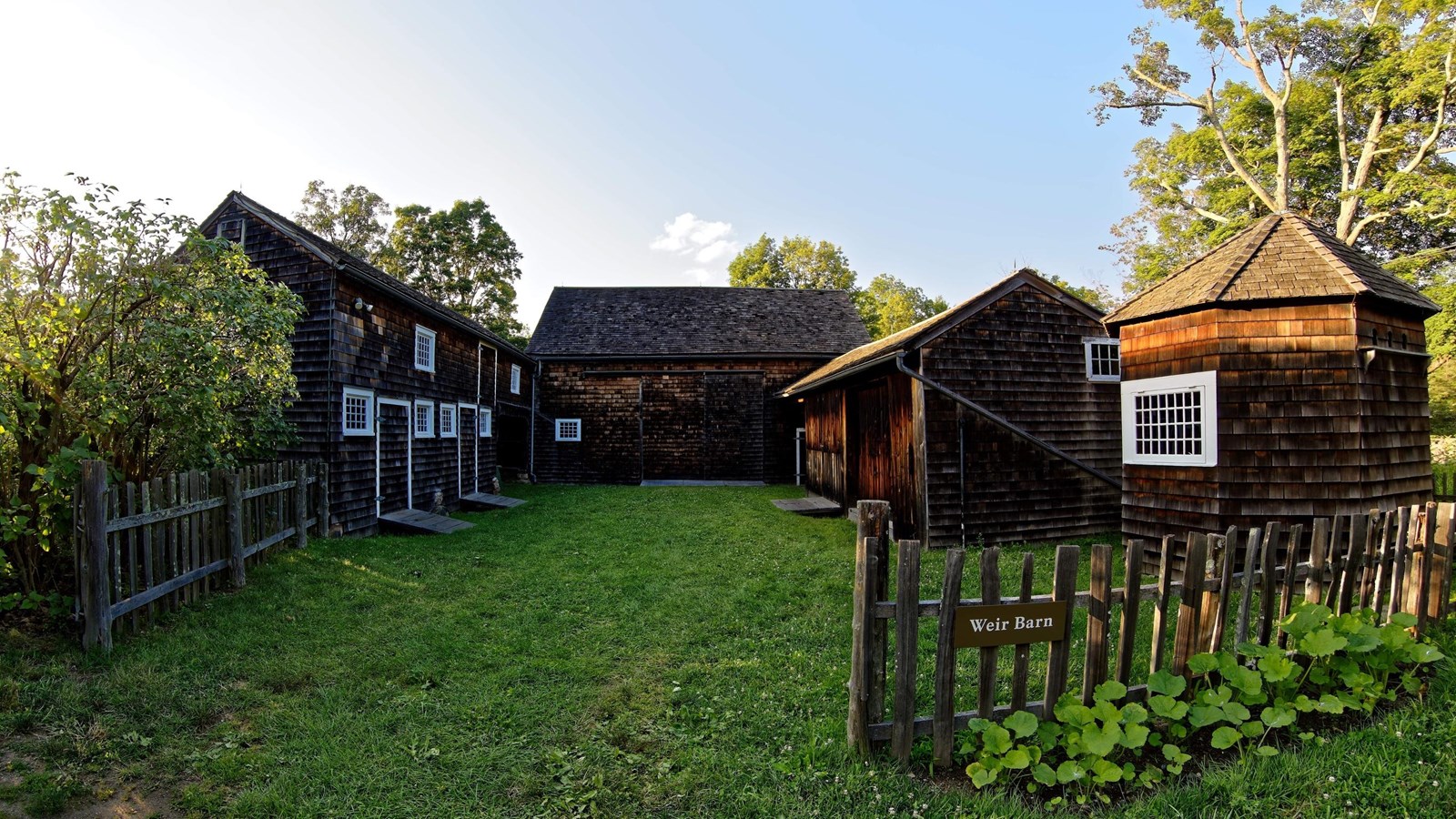Last updated: November 2, 2022
Place
Weir Barn

Xiomaro.com
Cellular Signal, Historical/Interpretive Information/Exhibits, Scenic View/Photo Spot
Until the late 19th Century, much of Connecticut was comprised of family farms, often named for the families that owned them. The Weir Barn and its outbuildings - the tack house, chicken coop, ice house, and corn crib - were crucial to the working farm. Seasonally, visitors can view four historically furnished rooms of this rare, pre-1835 English-style barn. The rooms display period farming objects and reproduction animals based on the art of Mahonri Young and Julian Alden Weir, to convey a sense of how the spaces were used by the Weir and Young families in the late 19th and early 20th centuries.
History:
Weir Farm was once a fully operating farm, with horses, cows, oxen, chickens, vegetables, and numerous gardens. But to Julian Alden Weir, farming was more of a hobby than an economic necessity, undertaken for aesthetic reasons. Weir's romantic vision of the landscape extended to his use of oxen, carts, and hand tools instead of modern machinery available at the time. Over its long history the barn complex has housed a milking room, a carriage house/wagon shed, a garage, a tack room, an equipment and tool room, hay lofts, a corn crib, and stalls for donkeys, ponies and horses.
Weir Barn is a typical "English-barn" built between 1815 and 1835. The Beer's family, who owned the property until 1880, might have built the original barn and added the wings.The current U-shaped style of the barn was present when Julian Alden Weir bought the 152-acre Branchville farm in 1882. He used the barn as a prominent feature in many of his paintings like "New England Barnyard" and "After the Ride."
After Weir's death, Dorothy Weir Young and Mahonri Young would continue to use the barn for agricultural purposes and as an artistic source of inspiration. As caretakers of the property in the 1940s, the Bass family farmed the land and served as subjects for artwork by Dorothy and Mahonri. The property was continuously farmed until the 1950s.
The Weir Barn today includes a stable, a pony stall, an equipment room, and a milking parlor. Weir Farm NHP does not have any farm animals.
The Weir Barn is open seasonally, Wednesday through Sunday. There are no set tours and the experience is self-guided. There are interpretive panels that explain the Weir Barn and its history.
The exhibits at the historic Weir Barn were made possible by generous grants and donations from the Elizabeth Raymond Ambler Trust (Wilton, CT), the Ridgefield Thrift Shop (Ridgefield, CT), and the G & B Cultural Center (Wilton, CT) to the Friends of Weir Farm NHP. Thanks to the support of park partners and visitors, Weir Farm National Historical Park is able to continue preserving special places like the Weir Barn, and to share the stories associated with J. Alden Weir and the three generations of artists that were inspired by the Connecticut countryside.
From November 1st to April 30th, all park buildings are closed for the off season, including restroom facilities.
